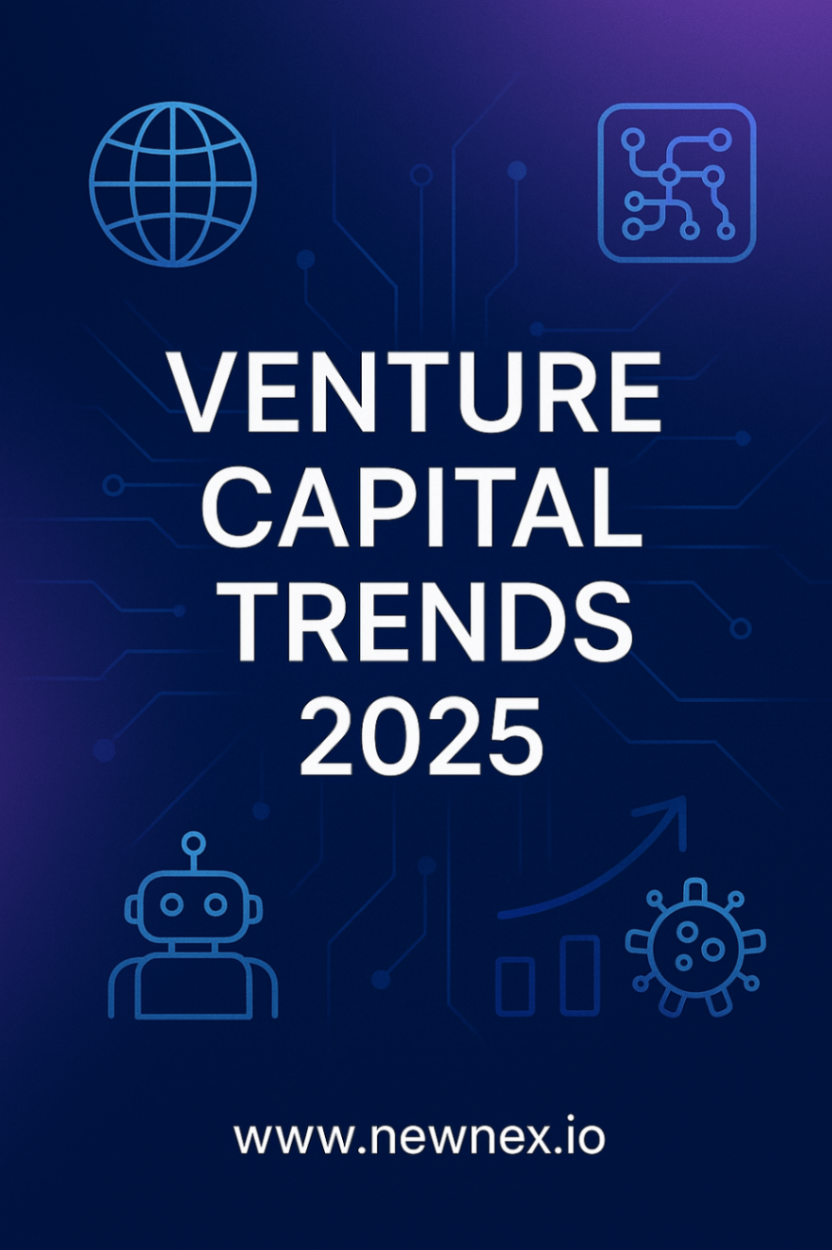Venture Capital Trends in 2025: Navigating Transformation in a Dynamic Landscape

Venture capital (VC) investment sits at the heart of global innovation, funding the growth of startups that fuel technological progress and shape economic futures. As of August 2025, the venture capital landscape is being reinvented, driven by sectoral breakthroughs, shifting investor profiles, and a rapidly evolving global context. This article offers a thorough overview of current VC trends, explores the factors behind these changes, and outlines what stakeholders can expect moving forward.
The State of Venture Capital in 2025
Venture capital has always been both a mirror and catalyst of broader innovation trends. In recent years, navigating persistent market volatility, recalibrating valuations, and the rise of breakthrough technologies like artificial intelligence have fundamentally changed how, where, and why capital is deployed. As VC adapts to these shifts, both challenges and fresh opportunities are emerging for investors, founders, and the wider ecosystem.
Investment Volatility but Growing Optimism: Following a period of correction and cautious investing in 2023 and 2024, global venture activity is gradually regaining pace. Funding volumes rebounded in early 2024 but have remained somewhat volatile, with total global VC investment projected to rise from approximately $301.8 billion in 2024 to about $364.2 billion by the end of 2025.
Revival of Exits: The IPO and merger & acquisition (M&A) markets regained momentum in late 2024, with expectations for continued improvement in exit activity throughout 2025. This is streamlining returns for funds and offering stronger incentives for new investments.
Disciplined Valuations:ur After over-inflated valuations in the prior cycle, the recent correction has helped reset expectations, creating more realistic investment opportunities and reducing the frequency of down rounds.
Sector-Specific Analysis
Artificial Intelligence: AI continues to dominate, drawing about one-third of all global venture funding. Investment is concentrating in generative AI solutions, infrastructure tools, and vertical applications, a sign of the sector’s maturity and continued promise.
Deep Tech & Robotics: In 2025, Deep Tech & Robotics investment has even outpaced AI in some quarters, reflecting growing demand for automation and resilient supply chains.
Healthcare & Biotech: Venture activity remains strong in healthcare, particularly in AI-driven diagnostics, digital health platforms, and biotech innovation for personalized medicine.
Green Technologies & Cleantech: Despite a dip in 2024, cleantech and green investments are rebounding, aligned with global ESG mandates and accelerated climate goals.
Fintech: Financial technology is expanding, particularly in emerging markets, as startups leverage embedded finance and AI-powered compliance tools.
Regional Dynamics
North America remains the foundation of global VC funding, with hubs like Silicon Valley, but also rising centers including Austin and Miami. U.S. investment continues to focus on AI and green technologies.
Europe saw a funding slowdown in 2024 but maintains strengths in AI, fintech, and cleantech, with the UK and Germany as notable innovation hubs.
Asia’s overall investment dropped, mostly due to China, but India and Southeast Asia posted resilient growth in areas like fintech and sustainable urban solutions.
Latin America is a standout, recording double-digit growth in venture activity, especially in fintech, e-commerce, and healthtech sectors.
Investment Stages & Deal Structures
Seed and Early-Stage: There is a resurgence of seed and early-stage backing, with average deal sizes increasing by 35% year-over-year, indicating both investor confidence and the emergence of new entrepreneurial talent.
Later-Stage: Larger rounds are more selective, with investors increasingly seeking clear paths to profitability.
Evolving Deal Terms: More deals feature pay-to-play provisions and ESG terms, while alternative funding models like equity crowdfunding gain traction.
Investor Profiles and Capital Sources
Family Offices & Sovereign Wealth Funds: These players are fueling much of the new capital, with long-term, innovation-driven mandates—particularly in AI and life sciences.
Institutional Investors: Pension and insurance funds are scaling up allocations to VC, diversifying portfolios for higher returns.
Corporate Investment: Technology giants are active through venture arms, often driving mega-rounds in AI and infrastructure.
Democratic Capital: A trend toward democratization is visible, with more female-led funds and diverse limited partners
Technological Impact: VC Adopts AI
VC firms themselves are increasingly leveraging AI for sourcing deals, conducting due diligence, and portfolio monitoring. This not only boosts efficiency but also levels the playing field for emerging firms. However, it also raises regulatory scrutiny regarding algorithmic transparency and data privacy.
Economic and Geopolitical Influences
Interest Rate Sensitivity: Higher rates have made investors more cautious, but expected interest rate cuts could fuel renewed activity.
Geopolitical Risk: Uncertainty related to global tensions, supply chain disruption, and cybersecurity is influencing where capital flows.
Correction and Efficiency: The shakeout of 2022–2024 led to more disciplined investment practices, with a strong focus on capital efficiency and measurable growth.
Future Outlook
The next phase of venture capital is likely to be marked by a measured optimism. Expectations for 2025 include a continued resurgence in AI and healthcare, a rebound in cleantech, renewed strength in global IPO and M&A markets, and expanding participation from new geographies and types of investors. Diversification, discipline, and technological leverage will likely define the funds and founders who thrive in this environment.
Venture capital in 2025 stands at a crossroads: balancing the promise of new technologies and markets with the realities of economic discipline and global complexity. For stakeholders—whether investors, founders, or policy makers—the key to success will be adaptability, strategic foresight, and a commitment to driving value amid ongoing change.
---
Newnex — Empowering Institutional Investors to Connect, Syndicate, and Co-Invest Directly - Join Newnex www.newnex.io
0
Comments